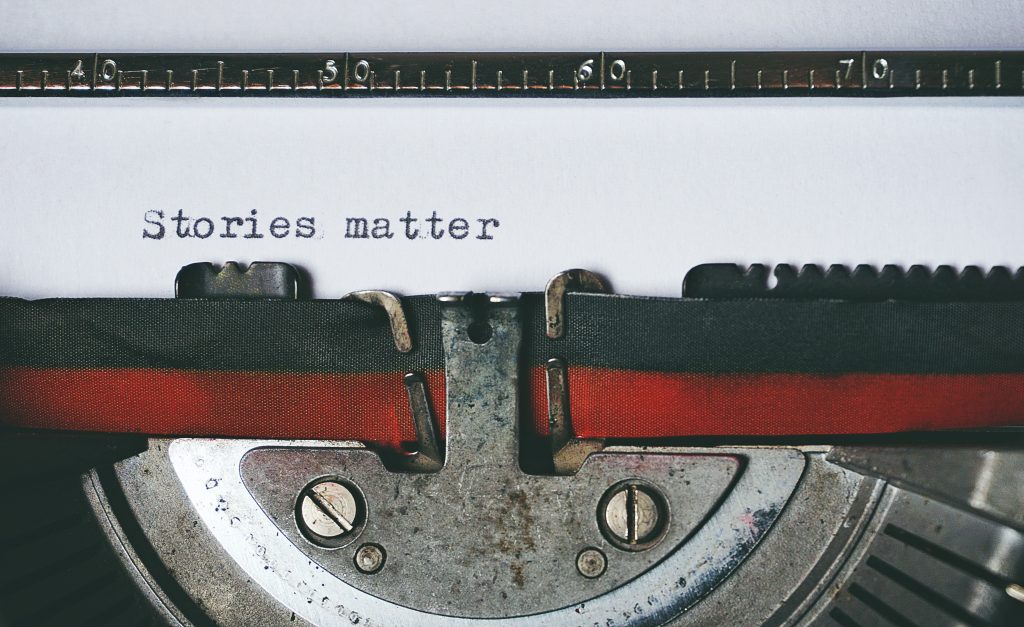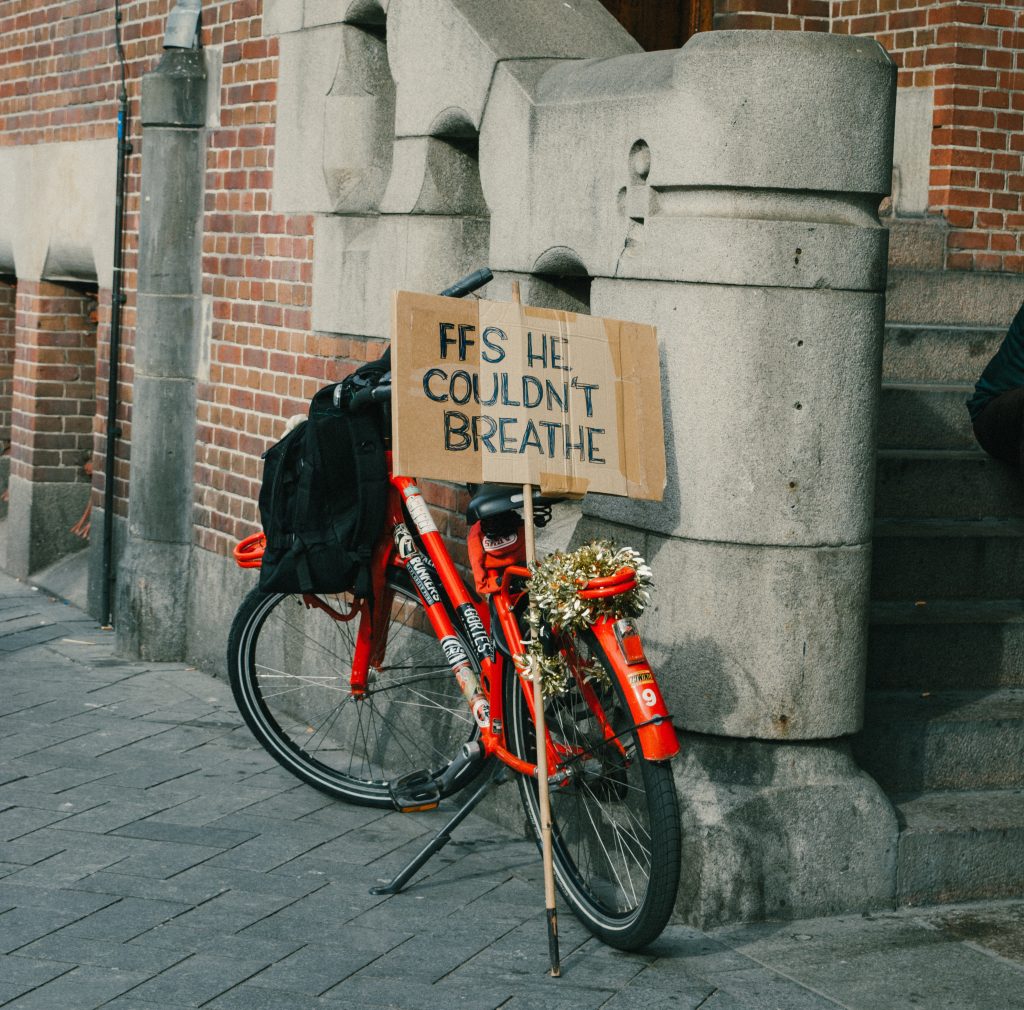Stelliform House Style: Equity in Editing

This post discussing some of the considerations in developing a House Style for Stelliform may be a bit nerdy for some. But in the context of current conversations about appropriate terminology and style for inclusiveness and equity, I thought it important to make process and position more transparent.
To follow some of the editorial decisions made in the wake of the recent Black Lives Matter protests, check out the recent style updates from the Associated Press and The Chicago Manual of Style.
Editorial Positionality
First, as Editor-in-Chief, my editing is influenced by my positionality. My own racial identity is something that I’ve struggled to describe for most of my life. It wasn’t until I went to graduate school that I was exposed to the kind of language that enabled me to describe my experience as the daughter of an immigrant to Canada. I won’t go into the complexities of that struggle here, but I will say that I am a biracial woman — my mother is part of the South Asian diaspora, coming to Canada after growing up under colonial rule in Zimbabwe. My father was white, though also with a racially and ethnically mixed recent ancestry.
Presenting as white to most people, I have privilege that other WOC do not have. I seek to use the white privilege I have to help others. My hybrid identity helps me as an editor to recognize ways to challenge conventional narratives and also, I hope, ways to make space for less familiar voices and stories. At the same time, because of the way I look and the way I was raised, I have gaps in my knowledge and perspective that I am always seeking to fill. I am struggling to reclaim knowledge that colonization and assimilation has taken away from me and my family. Most of this struggle comes out in conversations with friends and in my own fiction. But it also occasionally informs editorial approaches and decisions.
An Evolving Style
One of the ways I am reclaiming knowledge is by questioning the assumptions inherent in both texts and publishing processes. As an editor, I am confronting the norms of publishing, especially as the current cultural moment is moving quickly to discard some of those norms. I am paying attention to the language that people use to describe themselves and their experiences and holding these examples up against established style guides, such as the Chicago Manual of Style. The CMoS is the foundation of our house style, but we are also consulting other sources and making adjustments as required. Any adjustments we make are in an effort to make our editing process and the books we publish clear, inclusive, and relational.
One such source for staying up to date on discussions around inclusive and equitable editing is The Conscious Style Guide. Another is Elements of Indigenous Style: A Guide for Writing By and About Indigenous Peoples by Gregory Younging. This guide frames the problem of editorial authority in its first chapter:
The failure [of presenting Indigenous experience with accuracy] comes from a colonial practice of transmitting “information” about Indigenous Peoples rather than transmitting Indigenous Peoples’ perspectives about themselves … Cultural understanding … can only be achieved by a “perspective from the inside.” Indigenous and other scholars have since coined other terms for this perspective, such as Eurocentrism, and have written about, for example, the British-centrism of Canada.
Elements of Indigenous Style, Gregory Younging
Younging presents twenty-two principles of style which Stelliform also upholds to counter a Eurocentric perspective. The first, “to produce works that: reflect Indigenous realities as they are perceived by Indigenous peoples … [and] are truthful … [and] respectful of the cultural integrity of Indigenous Peoples” is supported by the second principle. This second principle is very simple. It is that when a conflict arises between Indigenous content or style and the standard style guides, “Indigenous style overrules other styles.”
This principle is already shaping Stelliform’s editorial approach to our authors who, so far, are not Indigenous. We respect our authors and the ways they choose to tell their stories. When we edit a manuscript, we make suggestions and initiate conversation but ultimately defer to the author’s way of telling the story. This deferral, which comes from a place of respect and openness, makes space for non-Eurocentric, non-heteronormative, and non-patriarchal perspectives and the issues of language, grammar, and style that support these perspectives.
Opening up discussions of how we approach the world around us necessarily includes the people around us. We can never be perfect in our approaches, but we can commit to being informed, to continuing our learning, and to valuing the lives and experiences of our authors and readers through what we publish.
Review: E.I. Richardson’s “A Good Mother”
For Pride Month 2020, we’re featuring a story by E. I. Richardson, a queer Black and Malay writer. “A Good Mother” (link) is a powerful, subtly unnerving horror story about family relations, abuse, and the day to day tasks of living with and working through trauma.
Story Synopsis

When the protagonist encounters a small child who then moves in with her, it is unclear where this child came from and who she is. There is evidence — in the way the main character recognizes her own “stubborn set of her mouth” on the child’s face, in the way she texts her sister about the arrival as if the child is known or even expected — that the child is the protagonist’s own mother. The appearance of the child is not explained and is taken in stride as the main character arranges her days around caring for an emotionally needy little girl. That the child is more than a strange echo of the protagonist’s past and her relationship with her mother surfaces in the occasional acknowledgement of the child’s shifting form, the way she is “sometimes brown, sometimes pale peach, sometimes short, sometimes a gray mound hulking over me, wrapped in winding sheets.” Even though the child is vulnerable, her mysterious, amorphous nature brings a sinister quality to the narrative.
That the child is an amorphous being that demands the love and attention of the protagonist in a way that can never be satisfied lends the story a cosmic horror feel: the child’s demands threaten to overwhelm and subsume in an almost mythical fashion. And for many people who live with the traumas of their abusive upbringingings, this is how day to day life can feel. Childhood experiences do become the mythology through which we understand and navigate adulthood. Childhood trauma is a past, present, and often future experience.
Motherhood and “Mother Earth”
“A Good Mother” is not an environmental story. An environmental reading of this story is not extracting inherent meaning from the narrative; instead, it is using E.I. Richardson’s examination of abusive mother-child relationships to understand the inherent relationality of human life in the environment in the time of climate change. The idea of a “Mother Earth” is still prevalent in the West, to the dismay of feminists who have worked to interrupt the idea of womanhood and motherhood as inherently “natural” or associated with the non-human environment (a dehumanizing move). Interrupting this idea is an ongoing process especially for Black feminists. So instead of reinforcing this paradigm, I would like to offer a mirror image, the flipped relationality of the Anthropocene.
We* are the abusive mother. We are the eldritch entity that shows up on Earth’s doorstep and demands, and needs, and demands some more. We reshape the ecosystems of our future children.
We are currently in a dangerous position, poised on the balcony railing. The question remains whether we are capable of throwing off the ways which perpetuate abuse. But also, possibility exists in instead throwing off the relations that capitalist-consumerist culture demands, taking up the mantle of the eldritch, disturbing entrenched power systems with the hulking presence of a populace fighting for equity and justice. Horror stories like “A Good Mother” are doing some of this work by holding up the light of examination to relationships of abuse and inspiring us to find and root out abuse everywhere.
*By “we” I mean Western people, those who uphold Western powers tangibly and ideologically, and those enjoying and perpetuating the specific types of power relationships which contribute to unsustainable living, both environmentally and otherwise.
ARC Giveaway: Michael J. DeLuca’s NIGHT ROLL
Last month we were delighted to give away 5 printed ARC copies of Sim Kern’s DEPART, DEPART! (now available for preorder) and we’re excited to do it again for Michael J. DeLuca’s NIGHT ROLL, coming in October.
Check out DeLuca’s Twitter thread and blog post for how to enter the contest. We’re also reprinting the blog post below:

This October, Stelliform Press will be publishing NIGHT ROLL, my novella about a climate refugee new mom struggling to survive and invest in new family and community in a very near future version of Detroit—envisioned from just before COVID19 and this global popular uprising against white supremacy. Now it’s got a cover (to be revealed anon), there are Advance Reader Copies, and I get to give five of them away!
I’m so ridiculously proud to have written this book and to get to be promoting it now, when all this is happening. Black lives matter, representation matters, the world needs new good stories to counteract all the old awful ones that contributed to white people seeing the world this way, whitewashed, with the brutality and violence and exploitation of Black bodies plain and accounted for. We need to listen to Black and Indigenous and marginalized voices, we need to boost their stories, we need to keep the conversation and the protests going until the self-perpetuating, entrenched, exploitative delusions all come crashing down just like the statues. If I’m very careful and do this right, I hope NIGHT ROLL can help contribute something to that movement. And at the same time boost the wonderful people at Stelliform and help them keep doing the essential work of forwarding new stories.
To that end:
THE RULES:
To enter the contest and accumulate chances to win an ARC of NIGHT ROLL, do as many as you like of the following: follow Stelliform on twitter, like Stelliform on fb or insta, join their mailing list, preorder their first title, Sim Kern’s Depart, Depart!, donate any amount to the NAACP, Black Lives Matter, a food bank, a bail fund, or any org supporting the causes of criminal justice reform and dismantling white supremacy (and send proof).
Edit: bonus if you let us know how many of these things you did so we can keep track! And extra points for signal-boosting the contest, retweets, shares etc.
The winners will be chosen raffle-style, one ticket per action taken above, one week from now, on Thursday, June 18. When I will also reveal the cover! And hopefully by then it will be possible to preorder the actual book in advance of its October release.
Thank you very much for playing!
New mother and climate refugee Aileen Dupree has been abandoned by her partner in post-industrial Detroit. Her neighbor, Virgil, is Aileen’s only connection to the outside world. But then Virgil borrows Aileen’s prized possession—a chrome and leather, royal blue fourteen-speed bike —and disappears. Looking for answers, Aileen hears strange stories of the Elf, a timeless being that always fought the colonizers and capitalists of Detroit, and now leads the Night Roll on a race through the city’s disintegrating streets. It is up to Aileen to brave the strange magic of the Night Roll and bring Virgil back. But what can the Elf teach her about her new life? And what must she pay for that knowledge? —Stelliform Press
Black Lives and Environmental Justice

By now everyone is aware of the recent international uprisings against police brutality and systemic oppression. If you are somehow not aware, see Mapping Police Violence for an overview of violent police actions against primarily Black people. The data, though not yet updated for 2020, shows that police violence is largely unconnected to the prevalence of crime in a specific place. The reason for that violence goes much deeper than specific incidents to which police respond. Black people (and their allies) are rising up now to confront a long history of violence.
There have been some social media rumblings about this moment as a distraction — from pandemic lockdown, from restarting the economy, from addressing climate change. But we must not be distracted from how all of these things are connected. In this moment we must attend to the suffering of Black folks. We must attend to the ways that their communities are sites of both the quick and aggressive violence of the state, as in police brutality, and the slow violence of poverty and climate change — violence that is “neither spectacular nor instantaneous, but rather incremental and accretive, its calamitous repercussions playing out across a range of temporal scales” (Rob Nixon, Slow Violence and the Environmentalism of the Poor).
This is a moment to make these connections and acknowledge and expunge that which feeds a violent system. The following are a collection of articles which connect racial injustice to the environment and environmental movements. Each of these articles demonstrates that necessity of approaching the problem of the environment with a broader, more inclusive vision of justice.
3 Ways Racial and Environmental Justice Are Connected, as Explained by the Vision for Black Lives
This article raises the facts that Black people have less access to renewable energy solutions such as solar panels and wind turbines, and are disproportionately affected by the waste and pollution produced by fossil fuels. The article also calls for more Black representation in politics, arguing that automatic voter registration is a way to increase political engagement at all levels of government.
The Climate Movement’s Silence
If you have ever attended a meeting for an environmental group and found yourself sitting amidst a crowd of white faces, it may be because mainstream environmentalism has long refused the connections between racial and environmental justice. This article describes a problematic segment of environmental movements — people whom the article labels “Climate Chads” — whose voices drown out those of Black environmentalists and shape movements toward whiteness. Environmental movements must address with the fact that addressing climate change means reckoning with the ways that movements shut out Black participation.
Responding to protests, green groups reckon with a racist past
This article details how environmental groups emerged from a foundation of racism — ideas of conservation that primarily functioned for white leisure in nature, or to preserve nature for the use of white people only. Early environmentalists were often overtly racist, espousing eugenics and sterilization for Black people (as well as Indigenous people and non-Black People of Colour) as a solution to overpopulation. While the article does highlight some statements made by environmental groups indicating that the focus is moving from conservation to an environmental justice which includes racial justice, the fact remains that the environmental movement’s racist past must be addressed and atoned for.
I’m a Black climate expert. Racism derails our efforts to save the planet
In this article by marine biologist and policy advisor Ayana Elizabeth Johnson, she quotes Toni Morrison who says that “The very serious function of racism … is distraction. It keeps you from doing your work. It keeps you explaining, over and over again, your reason for being.” Racism keeps Johnson and others from attending to the work of environmental stewardship and research, from giving climate change their full attention. Johnson also cites a statistic indicating that both Black and Latinx people are significantly more concerned about climate change than white people are, and imagines the power of a climate movement that includes those voices and that energy. Johnson calls for white environmentalists to become actively anti-racist in order to include Black people in the climate fight.
Stelliform and Amazon
In 2018, Amazon CEO Jeff Bezos was interviewed about Amazon’s success and its impact on Bezos’ space travel company, Blue Origin. In this interview, Bezos was quoted as saying:
The only way that I can see to deploy this much financial resource is by converting my Amazon winnings into space travel. That is basically it.
Jeff Bezos, Amazon CEO
Amazon and Labour
We love space travel and space research, but there are a lot of problems with this statement. Firstly, Bezos displays a shocking lack of imagination for someone with so many resources. He actively undermines his workforce when he clearly has the money to pay them more. Amazon’s warehouses in the midst of the pandemic are increasingly sites of unsafe contact, which Amazon workers protested on May 1st. Amazon’s response to union organization among its workers is to quibble about sick leave, remove union literature and fire organizers who agitate for health and safety improvements in the workplace.
That Bezos refers to the money Amazon makes as “winnings” demonstrates an understanding of economics divorced from human labour and the human lives his policies affect. That Bezos looks to space before tending to those affected by his choices on Earth is a grave failing.
Amazon and the Environment
Attending to its responsibilities on Earth would mean first taking stock of the ways that Amazon’s business choices are ecologically unsustainable. Amazon has not disclosed the information needed to get a complete picture of its environmental record, but various non-profits have done that work and ranked Amazon in the public interest. The Guardian collected rankings from Climate Counts, The Carbon Disclosure Project, and Greenpeace‘s How Clean is your Cloud report and found Amazon ranking among the worst environmental offenders. In this article, BuzzFeed reporter Nicole Nguyen details the ways in which Amazon Prime’s shipping contributes to emissions, traffic congestion, and waste, while locking consumers into a system that is undermining public delivery services.
Amazon and Publishing
When our editorial team first spoke with other local publishers, we asked “is it necessary to have our books on Amazon?” The resounding answer was “yes.” But we’re committing to revisit this question for the reasons listed above and because of the effect that Amazon has on small publishing.
When people buy books from our website, we receive 100% of that money. From that money, we buy our printed books and supplies, pay our authors and artists, and invest in marketing and publicity. When people buy from Amazon, we may receive 50% or less of the money we would for a direct order. Under Amazon’s model, we publish and publicize less, and authors and artists get paid less for their work. For many small publishers, having their books listed on Amazon costs them money.
Our Statement on Amazon
At this time, we are selling our books on Amazon. Amazon has many negative impacts on our society, but it also provides some good: quick delivery of essential items for people with disabilities, or cheaper items for those who can’t afford to shop elsewhere. Amazon also provides some semblance of legitimacy for new authors. These authors need to be accessible to their readers at a central web location, not relegated only to the small-press-corners of the Internet. While we hope you will choose to support us and our authors by purchasing books from our website, it is important for our books — and our ideas — to be available to a wider public, which is access that Amazon provides. Indie publishers are beginning to make dents in this monolith. This is work to which we will contribute as we grow.
